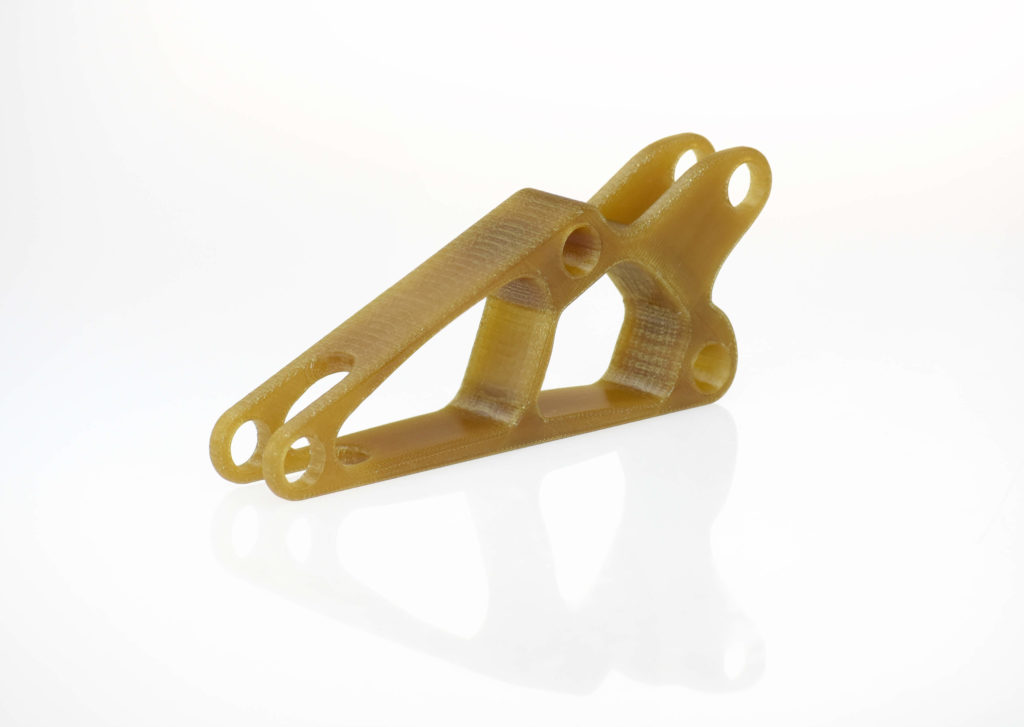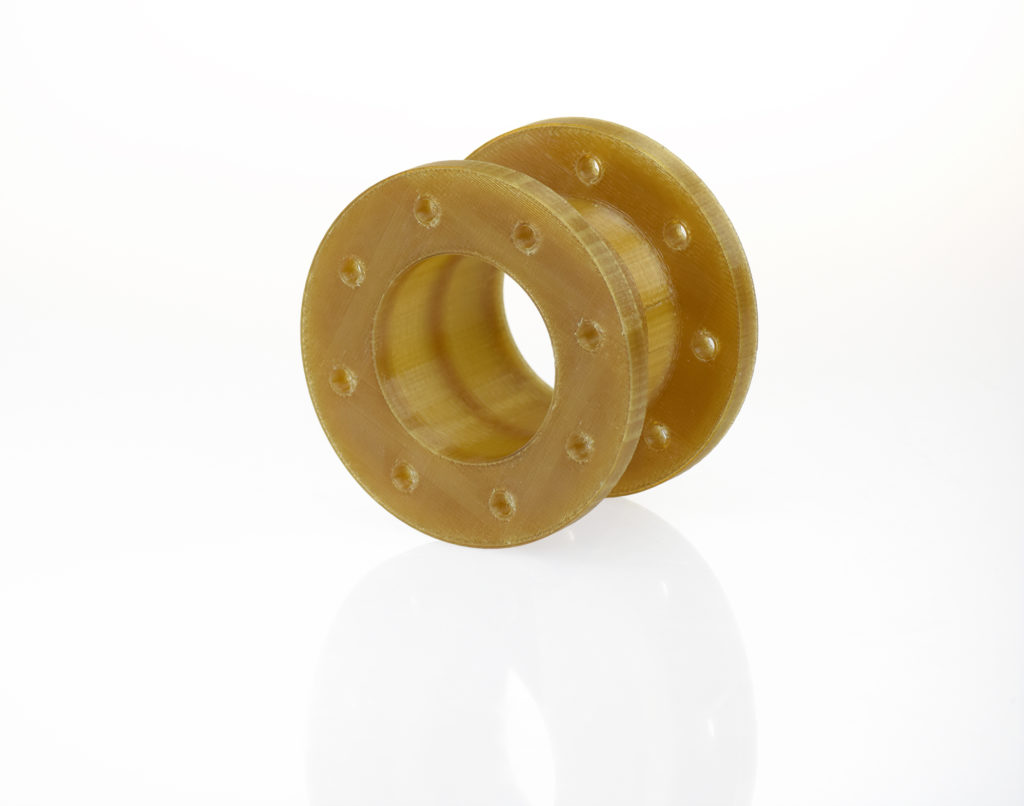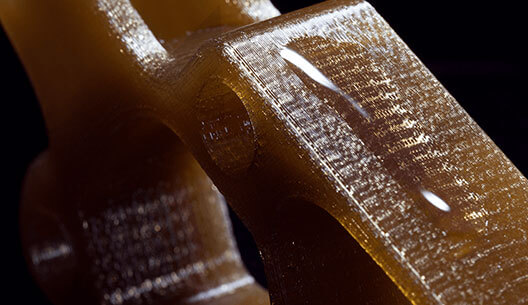Recently, Stratasys reported that its Antero 800NA material, a form of polyether ketone ketone (PEKK), has been qualified by Boeing. Boeing qualified the material under the spec: BMS8-444. Potentially this means that the material could be used for applications such as environmental control ducting, for which 3D printing is widely being used currently on commercial aircraft. In military aviation, it could perhaps now be more likely to be used for retrofits, upgrades and, perhaps, new aircraft.
Antero has previously been used onboard Lockheed parts for NASA’s Orion spacecraft. Antero has been optimized for Stratasys’ Fortus systems and for use on aircraft. As a member of the polyaryletherketone (PAEK) family of plastics, the material is an alternative for PEI (which Stratasys sells under the ULTEM brand) as a high-strength, high-chemical resistance, high-continuous-use-temperature polymer. The material is also an alternative to polyether ether ketone (PEEK) or other PEAK family materials.
I’d bet that Antero itself is actually made by Arkema and welcome its addition to the 3D printing arsenal. The more materials that are available, the more choice users will have in materials companies and materials qualities. With that confidence, they can then be much more likely to industrialize 3D printing, with material and supplier redundancy in mind. PEKK is also much easier to print than PEEK, which will be welcome news to many.

We previously interviewed Scott Sevcik on aerospace progress at Stratasys and got another chance to talk to him about Antero now. Sevcik believes that PEKK’s toughness, strength, higher temperature and better fatigue life properties make it ideal for use on aircraft. Additionally, he noted, “With better control of recrystallization, we have better repeatability.” This coupled with, “exceptional dimensional accuracy” means that the part is suited for manufacturing.
“We can’t get performance like that with other materials. Maybe for one-off parts, or for small parts, but not for large parts that have to be printed in series,” Sevcik said. “With ULTEM, there is a little bit of strength gain, but better chemical resistance to fuels, hydraulic fluids and hydrocarbons in general is what sets PEKK over PEI. Fatigue performance in cyclical environments and better elongation are key qualities. ULTEM is the ideal material for inside the aircraft cabin and Antero outside of it.”

The expected applications are broad and could include brackets and ducting. Aside from commercial aviation Sevcik sees “missiles, rockets, drones and other remotely operated vehicles” as being opportunities. Sevcik mentioned that, at the Air Force’s Advance Manufacturing Olympics, Antero was showcased in a F16 wheel well part as a hydraulic line clamp.
“Certainly we see a lot of interest in Air Force sustainment, with parts being installed in and on aircraft,” Sevcik said. Another part of the Olympics saw the Supply Chain Marathon showcase how to support a Forward Operating Base using Antero together with Fortus systems. Sevcik sees this as an indication that Fortus can be used to “bring high-performance capability far forward.”
I was curious if he would expect soldiers to hack parts and improvise with 3D printing or strictly print parts according to specifications.
According to Sevcik, “You have a different need when you put a part on an aircraft. There, you want to have all of the data. But, if you want to get a broken vehicle across the line and back to base, troops will be very creative. Depending on the context, different levels of creativity and skills will be expected.”
Right now, defense is a hot spot for Stratasys. Other applications, such as Lockheed’s work on the Orion spacecraft, is expanding for them as is work in satellites generally. He sees Stratasys as printing some parts directly, selling through services, and sees Tier 1 suppliers and OEMs make some parts themselves.
In the future, Sevcik considers more launch vehicles, helicopter, a ground based deterrent program, Artemis, new hypersonics programs, and even a next-generation fighter as key areas of interest. At the same time, some older military aircraft will be kept flying even longer. Sevcik sees opportunities for Antero and Stratasys FDM wherever engineers have “challenges in keeping vehicles light.”

Sevcik is very proud that Antero is now on Boeing’s Qualified Products Lists. This registry of what has completed qualification allows people to specify and bid on parts made in Antero.
“It demonstrates our performance and is a real milestone showing a lot of confidence from Boeing in the material and in 3D printing. The fact that this specification is available down throughout the supply chain and that Boeing has made an Investment in qualifying the material opens a lot of doors for us.”
Subscribe to Our Email Newsletter
Stay up-to-date on all the latest news from the 3D printing industry and receive information and offers from third party vendors.
Print Services
Upload your 3D Models and get them printed quickly and efficiently.
You May Also Like
Making 3D Printing Personal: How Faraz Faruqi Is Rethinking Digital Design at MIT CSAIL
What if your 3D printer could think more like an intelligent assistant, able to reason through a design idea, ask questions, and deliver something that works exactly the way the...
Reinventing Reindustrialization: Why NAVWAR Project Manager Spencer Koroly Invented a Made-in-America 3D Printer
It has become virtually impossible to regularly follow additive manufacturing (AM) industry news and not stumble across the term “defense industrial base” (DIB), a concept encompassing all the many diverse...
Heating Up: 3D Systems’ Scott Green Discusses 3D Printing’s Potential in the Data Center Industry
The relentless rise of NVIDIA, the steadily increasing pledges of major private and public investments in national infrastructure projects around the world, and the general cultural obsession with AI have...
Formlabs Teams Up with DMG MORI in Japan
In late June, Nick Graham, Chief Revenue Officer at Formlabs, announced on LinkedIn that the company had partnered with DMG MORI, one of the world’s leading machine tool companies, to...

































